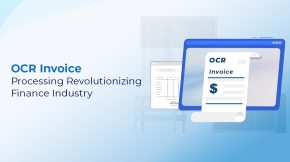Microsoft Dynamics 365 Finance & Operations vs Business Central
It is more definitely the time now when the ERP selection has become mission-critical in this very modern age of business. For an entity in the dynamics of Microsoft, the choice is fundamentally one of choosing between Dynamics 365 Finance & Operations and Dynamics 365 Business Central.
ERP-Landscape Understanding for Microsoft Dynamics 365 F&O vs Business Central
This decision will directly impact operational efficiency throughout. According to Gartner’s 2024 ERP Market Analysis report, 68% of the ERP implementation failures were due to the selection of a platform that was not suited to organizational size and complexity. Such analysis require complete understanding of the key differences between Business Central and D365 Finance before making any investments.
- An architectural and capability review of each platform.
- A detailed comparison between the two platforms based on 12 essential business functions.
- Implementation case studies from the real world.
- Total cost of ownership with a 5-year time span.
- Future roadmap and AI integration insights
- Decision framework for organizations of various sizes and industries.
Dynamics 365 Business Central: Shuttle Power for SMBs
Dynamics 365 Business Central being modern, cloud-first, and meant to oversee prime business functions was born by the transformation of Microsoft’s NAV (in short for: Navision) suite. As a comprehensive solution, it brings together financial management, supply chains, sales and service, light manufacturing, and project management under one umbrella.
Its architecture is designed for simplicity and agility, being single-tenant SaaS so that resources are dedicated to each customer. Being built on the Dynamics 365 common platform, it guaranteed integration with other Microsoft applications. The platform is created on mid-market scale, supports databases up to 150GB, and is tested with heavy integration scenarios setting API limits at 60,000 calls per hour.
Dynamics 365 Finance & Operations: Built to Serve at Large Scale
Finance & Operations (F&O) sort of spawned out of the mighty Microsoft AX (Axapta) and was built-with-thought for those huge, global enterprises that require functional depth across multiple domains. Their modular architecture favors sophisticated features throughout areas like advanced financials and reporting, complex manufacturing execution, global trade and logistics, retail and commerce, and human capital management.
Technical architecture speaks truly of its enterprise intent, allowing multi-tenant scenarios with dedicated environments transforming into big-scale deployments. Support comes for massive database environments exceeding 1TB and scales to support more than 500 concurrent users per instance. It permits enterprise-grade integration with an API capacity of 300,000 calls/hr. If the research of IDC in the year 2024 is to be believed, key customer areas saw dramatic improvements: supply chain visibility improved by 32 percent, carrying costs for inventory reduced by 28 percent, and therefore making it worthwhile for complex organizations to go for this platform.
Choosing the Right ERP Platform For Your Business
Choosing Microsoft Dynamics 365 F&O vs Business Central is among the biggest business growth decisions. Seventy-three percents of companies feel challenged during ERP implementation because they have chosen the wrong platform (Gartner 2024). Hence, a clear understanding of key differentiators between Business Central and D365 Finance is a must. This Complete Guide will help you understand:
- Which Microsoft’s ERP solution suits mid-sized businesses better
- When a small company should use Business Central while an enterprise should go for F&O
- TCO over a 5-year period
- Underlying Real-World Implementation Scenarios
Financial Management Comparison- Microsoft Dynamics 365 F&O vs Business Central
Both strong foundational accounting systems stand at their feet, whereas Finance & Operations cater to highly complex regulatory and operational demands coming from large global enterprises, Business Central being ALM for most SMBs. Business Central financials most happily cater to more than 95 percent of small and medium-size organizations. On the contrary, F&O provides advanced regulatory compliance features, complex layers of financial reporting, and scalable architecture necessary for public and world-level corporations.
| Feature |
Business Central |
Finance & Operations |
| Core GL |
Full functionality |
Advanced dimensions |
| Multi-currency |
Up to 5 currencies |
Unlimited currencies |
| Tax Engine |
Basic calculations |
Vertex/Oracle tax integration |
| Budgeting |
Worksheet-based planning |
Driver-based planning |
| Fixed Assets |
Depreciation tracking |
Lease accounting |
Supply Chain and Manufacturing Capabilities
Microsoft Dynamics 365 F&O vs Business Central comparison becomes most apparent in the realm of supply chain and manufacturing, highlighting their distinct target audiences. Business Central provides the essential tools needed for smaller-scale or less complex distribution and light manufacturing. In contrast, Finance & Operations delivers the deep, specialized functionality required to optimize and automate high-volume, complex supply chains and manufacturing operations, directly contributing to significant efficiency gains and cost reduction. While both solutions offer core accounting, F&O delivers regulatory compliance features needed by the public companies and multinational corporations, whereas Business Central financials meet 95% of SMB requirements at much lower complexity.
ERP comparison Microsoft 2025
| Functional Area |
Business Central |
Finance & Operations |
| Inventory Management |
Basic warehouse functionality, suitable for simple bin tracking and put-away/pick processes. |
Advanced Warehouse Management System (WMS) supporting complex distribution centers with wave, load, and cluster picking, and full mobile device integration. |
| Production Control |
Handles simple routings and Bills of Materials (BOMs) for make-to-order or assembly-to-order processes. |
Supports finite capacity scheduling, shop floor control, manufacturing execution systems (MES), and complex production types like process manufacturing. |
| Procurement |
Essential 3-way matching (PO, receipt, invoice) for ensuring accurate payments. |
Strategic sourcing modules for supplier collaboration, vendor performance management, and centralized contract management. |
Microsoft Dynamics 365 F&O Vs Business Central: Five-Year Cost Comparison for100 Users
Understanding the long-term financial for Microsoft Dynamics 365 F&O vs Business Central is crucial. The cost disparity highlights the fundamental difference between an mid-market and an enterprise solution.
| Cost Category |
Business Central |
F&O |
Difference |
| Licensing |
$420,000 |
$1,080,000 |
+157% |
| Implementation |
$150,000 |
$750,000 |
+400% |
| Customization |
$50,000 |
$300,000 |
+500% |
| Maintenance |
$105,000 |
$270,000 |
+157% |
| Total 5-Year TCO |
$725,000 |
$2,400,000 |
+231% |
Source: Nucleus Research ERP Value Matrix 2024
Microsoft’s Investment Plan for from 2024-2026
The digital revolution of business processes is speeding up, and Microsoft responded by making heavy investments in Dynamics 365 both Business Central and Finance & Operations until the end of 2026. These enhancements target three transformative areas that will shape the enterprise software industry. AI is being deeply ingrained in financial and operational workflows, with Copilot to integrate automation of mundane tasks and production of actionable insights.
Sustainability might well become a first-class citizen of this suite, allowing companies to calculate the full environmental impact of their supply carrier and generate compliance reports with no reliance on third-party tools. Upgraded Power BI analytics will offer dashboards targeted to industries and also support natural language queries that make BI easier to use than ever before.
Both platforms will get deeper Copilot AI integration, automating tasks like financial entries and inventory forecasting. Sustainability tracking tools will help businesses measure carbon footprints, while Power BI upgrades bring smarter, real-time analytics. These shared advancements mark the evolution scientist and the sustainable and data-driven future of business management throughout Microsoft’s ERP stack.
Business Central: SMB-Focused Improvements
Small and mid-sized businesses are all about simplicity, connectivity, and financial intelligence. The new changes will try to directly address the common issues SMBs face:
- Shopify Native Connector: The most awaited feature is indeed an order to stock level of the last mile, so here for distributors, it will be the saving of manual data entry as orders, inventory, and customer info are synced between eCommerce store and ERP. This will help retail and distribution companies scale without being bogged down in administration.
- Cash Flow AI for SMBs: Moving from reactive accounting to proactive financial management, AI-enabled predictive forecasting of cash flows will sketch out insights to avoid shortfalls and to time payments optimally-an extremely important capability for progressing businesses.
- Improved Project Templates: Professional service companies will find that the project setup is streamlined through pre-configured intelligent templates that will improve resource allocation and ease the tracking of time and expenses, hence better driving profitability.
Who benefit the most? Retailers, distributors, and professional service agencies looking for integrated, affordable, and intelligent business management.
F&O: Advanced Enterprise Tools
For large-scale global organizations, we invest in operational resilience, strategic forward planning, and worldwide compliance. The new features of F&O are designed for enormous scale and complexity:
- Digital Twin Integration: This enables manufacturers to create a virtual realization of their physical works. Production scenarios can be tested, maintenance can be predicted, and layout can be optimized on Cloud environment the risk of implementing changes in reality.
- AI Assistant: Operate seamlessly through the complex processes of Industry 4.0 and Global trade. Microsoft ERP gives you complete control over compliance checks, tariff and regulations across borders, and global operations.
Who will benefit the most? Global manufacturers, multinational retailers, and any enterprise dealing with complex supply chains and multi-country regulatory requirements.
Business Central vs Dynamics 365 F&O: Which ERP is Right for You?
With these huge upgrades around the corner, business entities able to make their consideration at the proper moment would be able to harness the most potent ERP technologies of tomorrow. Microsoft dynamics 365 implementation partners can offer assessments and consultation services, however the key here is to realize your organization’s specific ERP needs, growth trajectory, and pain areas. With these substantial upgrades on the horizon, businesses that carefully evaluate their options will be positioned to leverage tomorrow’s most powerful ERP innovations.
Choose Business Central if:
- Your revenues are less than $250 million
- You are conducting business in only one country
- You have averaged manufacturing needs
- You want to be implemented and ready to use in six months
- Your IT personnel hardly know anything about ERP
Choose Finance & Operations if:
- You operate under various regulatory jurisdictions
- Your production scheduling is quite advanced
- You require complex intercompany requirements
- Big growth and/or mergers and acquisitions are expected
- You need industry-specific functionalities
Conclusion: Making the Strategic Choice
This guide outlined the fine distinctions, price considerations, and implementation facets. Yet depending on peculiar business needs, growth plans, and operational complexities, the correct fit will truly differ. Don’t leave your ERP decision to guesswork. Let’s identify the right Dynamics 365 solution for your business—at no cost. A Dynamics 365 F&O vs Business Central decision is always a balance between organizational complexity and implementation agility. Business Central gives you 80% of core ERP functionality for 40% of the cost, while F&O provides the level of depth needed by global enterprises.












